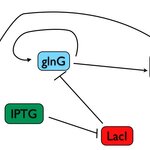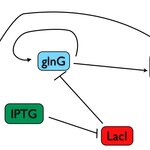Genetics & Molecular Biology

Chloroplasts are photosynthetic organelles containing a part of plant genome usually called plastome. Introduction of foreign genes into plastids and creation of transplastomic plants has some advantages over classic nuclear transformation, so chloroplasts are of great importance for biotechnology. Chloroplast gene expression machinery is diverse and complicated. Apparently, it was inherited from a cyanobacterial ancestor but evolved greatly in eukaryotic plant cell. Transcription is the first stage of gene expression and the review focuses on plastid transcription apparatus. Higher plant…

Reporting in the Journal of Biological Chemistry, an international team of researchers has determined the structure of 14α-Demethylase (14DM), an enzyme essential to the survival of the protozoan parasites that cause sleeping sickness, Chagas disease and leishmaniasis. They say this new information provides the first up-close look at the busy enzyme and, perhaps more importantly, shows how one compound in particular prevents it from conducting business as usual.
The team chose to attack the parasite's enzyme known as 14DM because it has a counterpart in fungi, which cause athlete's foot and…

What will geneticists and molecular cell biologists be doing in 2020? 10 years ago, genomic technologies like DNA microarrays were just beginning to change the way molecular biologists worked, and the draft sequence of the human genome was a year from publication. Over the next decade, genomics, in the form of high-throughput tools, and large sequence databases, completely transformed the day-to-day work of just about everyone in the basic biomedical sciences.
Today, new DNA sequencing technologies have rendered DNA microarrays obsolete for most of their original applications (although they…

Glioblastoma (GBM), the brain cancer better known for having killed Senator Ted Kennedy a few months ago, is the most aggressive and lethal of all brain tumours. But a collaboration between researchers from the University of Minho in Portugal, and the University of California-San Francisco, has found new reasons to be optimist. Their research, published in the journal Cancer Research(1), reveals that activation of a gene called HOXA9 is linked to GBM severity – the more activated HOXA9 is, the more aggressive the tumour turns out to be. The good news is that this activation can be reverted.…

Cancer-initiating cells that launch glioblastoma multiforme, the mostlethal type of brain tumor, also suppress an immune system attack onthe disease, scientists from The University of Texas M. D. AndersonCancer Center report in a paper featured on the cover of the Jan. 15issue of Clinical Cancer Research.(1)
Glioblastoma MuliformeGlioblastoma multiforme (GBM) is the most common and most aggressive of the primary brain tumors. It responds poorly to therapy and glioblastoma multiforme cancer-initiating cellshave been shown to mediate resistance to both chemotherapy and radiation. The current…

Earlier this week I argued that biological systems posses dynamical properties that are biologically important, and understandable primarily through mathematical modeling. As an example, I discussed a paper that explored the advantages of double positive feedback loops in bistable switches.
I glossed over the math behind the model because of space and time constraints. (Constraints on a blog, you wonder? Well, I ran out of time, and once a blog post gets beyond 1000 words, the number people who read it to completion probably drops exponentially for every word over 1000.)
However, the math is…

Using proteosome inhibitors to trick cells into producing a chaperone protein called Hsp70 may be one way of enhancing the natural ability of cells to restore their own mutant proteins. Researchers at the Fox Chase Cancer Center say the discovery may help treat certain debilitating – or even fatal – genetic diseases.
Genetic diseases are often caused by a specific type of genetic alteration called a missense mutation that makes cells add an incorrect amino acid into the protein chain. Since the shape of a protein depends on the specific arrangement of amino acids, even a single error…

Scientists have just identified several molecules capable of reversing the brain abnormalities of Parkinson’s disease (PD), while also uncovering new clues for its origin in a study just published in the journal Disease Models and Mechanisms (1). PD is characterised by abnormal deposits of a brain protein called alpha-synuclein throughout the damaged brain regions, but exactly what they do there is not clear. The fact that their numbers and spreading are associated disease progression has made them, however, a major point of interest in PD research. The work now published suggests that these…

Why should we bother building mathematical models of biological systems? Scientists from other fields might wonder why one would as such a question - physicists, climate scientists, economists, engineers, and chemists all use mathematical models to understand the world.
Some biologists do too - individual proteins are studied with quantum mechanical models by biophysicists, enzyme reactions are modeled by biochemists, physiologists have mathematical models of the circulatory system, and population geneticists model the evolution of gene frequencies in populations.
However, there is a big gap…

A molecule called Alda-1 can repair Aldehyde dehydrogenase 2 (ALDH2), an often defective alcohol metabolism enzyme that affects an estimated 1 billion people worldwide, according to research published Jan. 10 in the advance online edition of Nature Structural and Molecular Biology. The findings suggest the possibility of a treatment to reduce the health problems associated with the enzyme defect.
After alcohol is consumed, it is metabolized into acetaldehyde, a toxic chemical that causes DNA damage. Aldehyde dehydrogenase 2 (ALDH2) is the main enzyme responsible for breaking down…